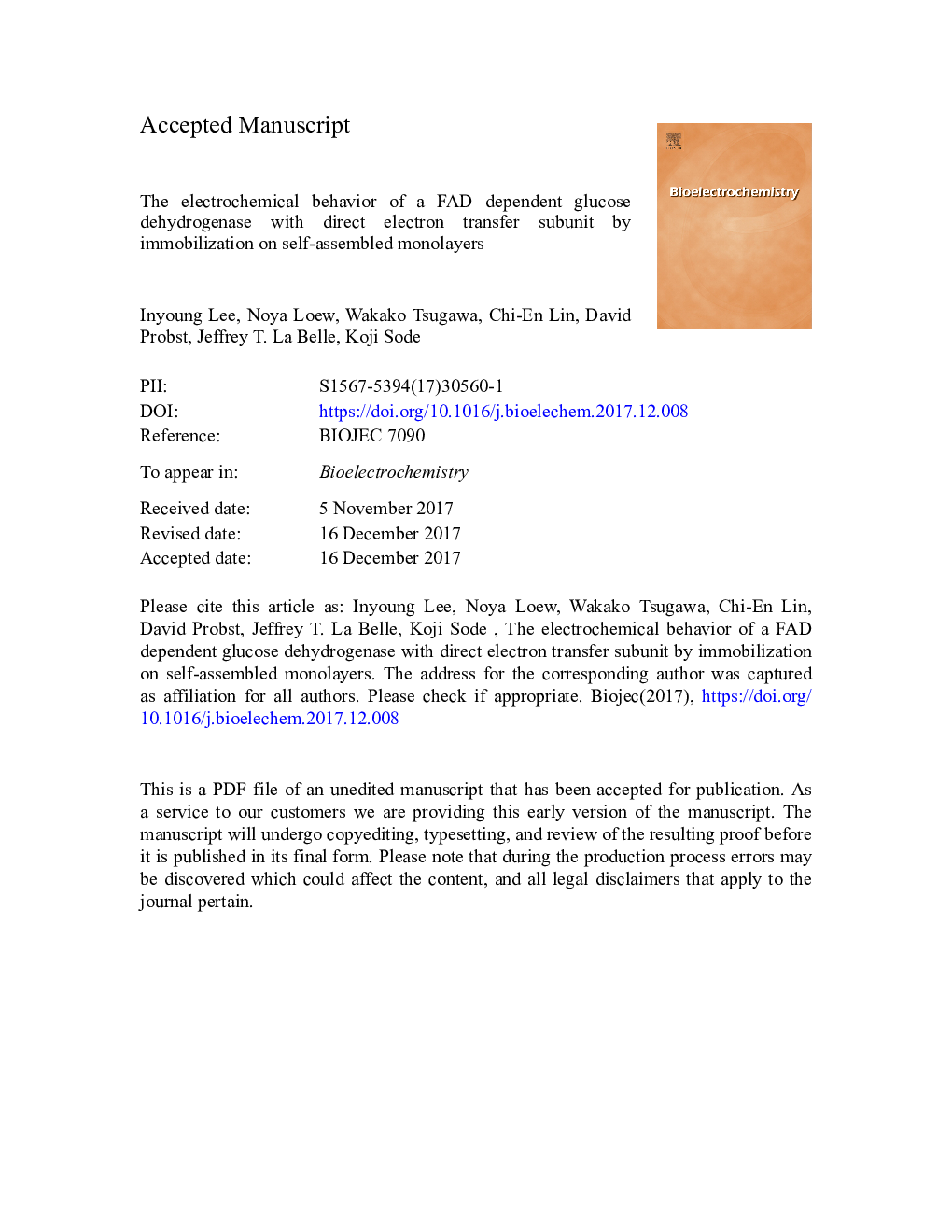| Article ID | Journal | Published Year | Pages | File Type |
|---|---|---|---|---|
| 7704509 | Bioelectrochemistry | 2018 | 39 Pages |
Abstract
Continuous glucose monitoring (CGM) is a vital technology for diabetes patients by providing tight glycemic control. Currently, many commercially available CGM sensors use glucose oxidase (GOD) as sensor element, but this enzyme is not able to transfer electrons directly to the electrode without oxygen or an electronic mediator. We previously reported a mutated FAD dependent glucose dehydrogenase complex (FADGDH) capable of direct electron transfer (DET) via an electron transfer subunit without involving oxygen or a mediator. In this study, we investigated the electrochemical response of DET by controlling the immobilization of DET-FADGDH using 3 types of self-assembled monolayers (SAMs) with varying lengths. With the employment of DET-FADGDH and SAM, high current densities were achieved without being affected by interfering substances such as acetaminophen and ascorbic acid. Additionally, the current generated from DET-FADGDH electrodes decreased with increasing length of SAM, suggesting that the DET ability can be affected by the distance between the enzyme and the electrode. These results indicate the feasibility of controlling the immobilization state of the enzymes on the electrode surface.
Keywords
Related Topics
Physical Sciences and Engineering
Chemistry
Electrochemistry
Authors
Inyoung Lee, Noya Loew, Wakako Tsugawa, Chi-En Lin, David Probst, Jeffrey T. La Belle, Koji Sode,
